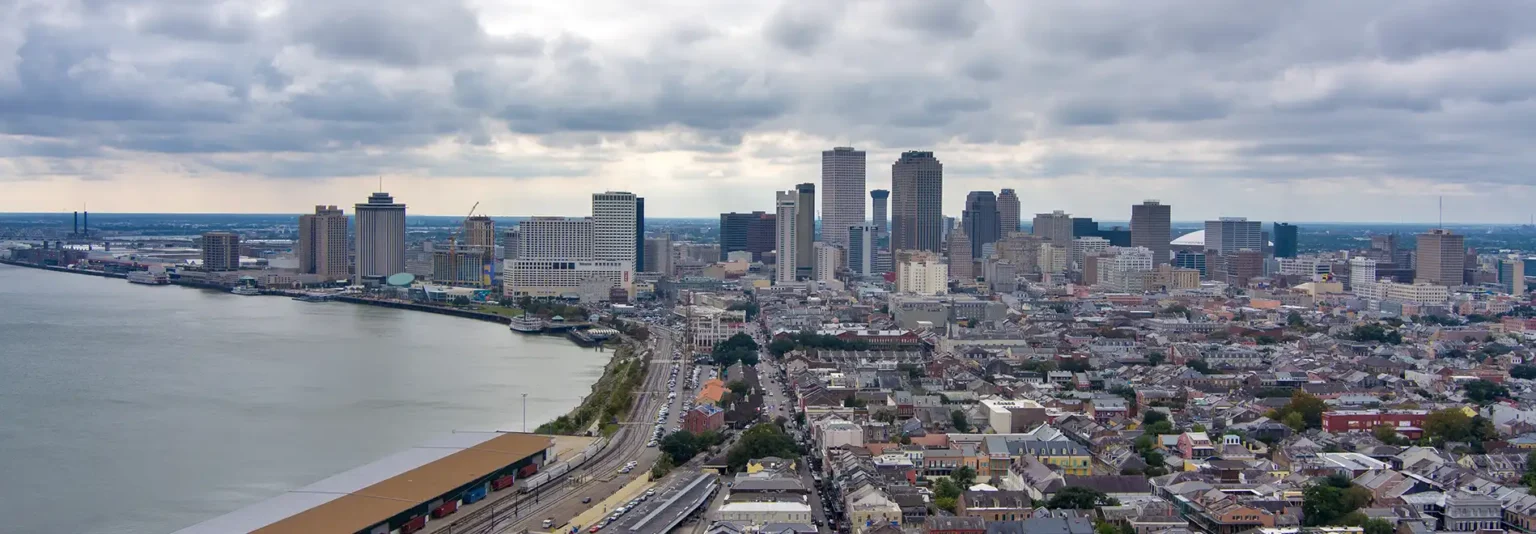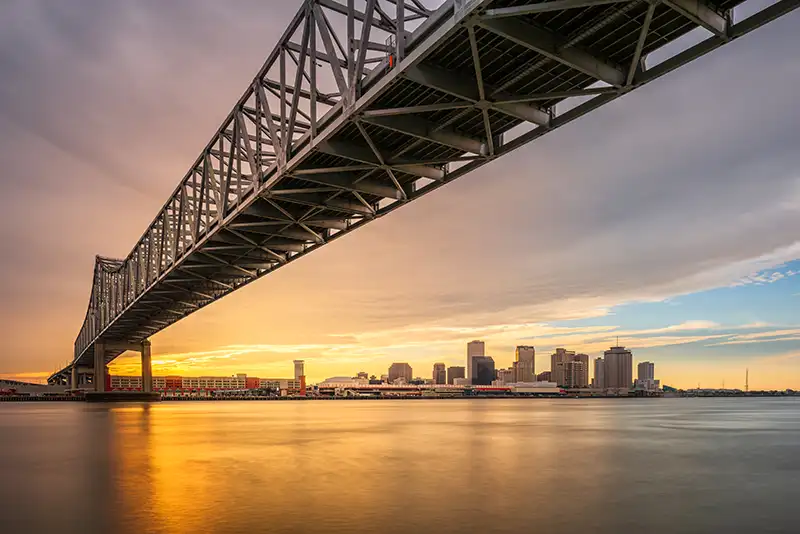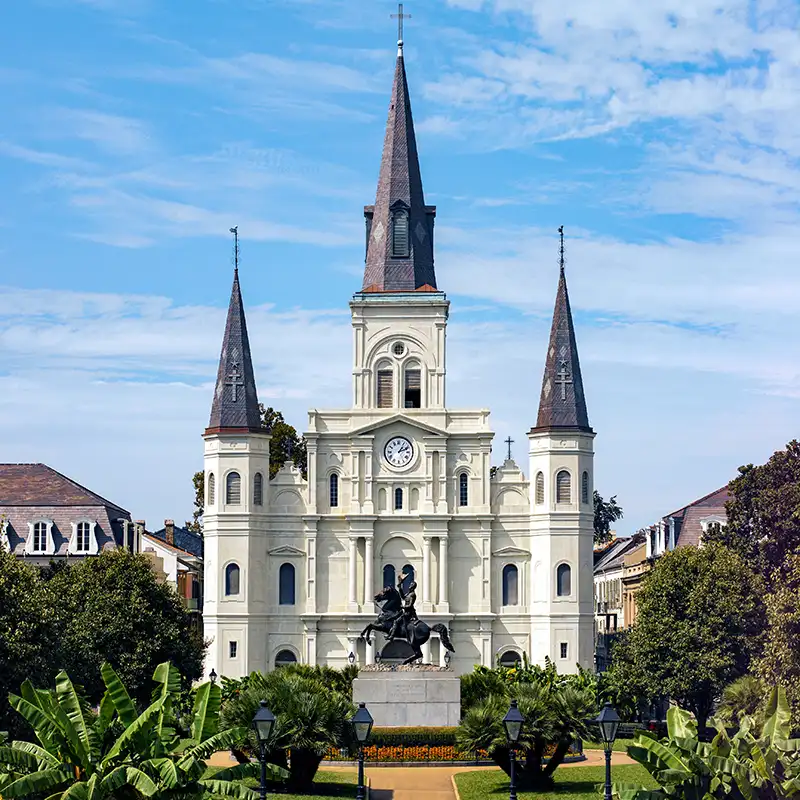New Orleans: Mosaic of Culture
New Orleans, Louisiana, has been called “The Big Easy.” The city is synonymous with the joie de vivre, its incredible food, and music. It’s its French Quarter, Mardi Gras celebrations, and heritage over jazz that make New Orleans stand out and offer visitors an experience that many visit from all parts of the world to remember.
Historical Overview
New Orleans was founded by French settlers in 1718. There, the culture was massive with influence from all four major origins: French, Spanish, African, and Creole. Being a port city of immense commercial importance, the city has attracted people from all walks of life as well as different parts of the world. The Louisiana Purchase from France to the United States in 1803 further cemented its history. New Orleans played vital roles during the Civil War and developed as a hub for the Civil Rights Movement in the 20th century. Its historic mainstays-the Jackson Square and the St. Louis Cathedral-tell stories of the city’s past, while its glitzy Carnival episodes add flavour to its rich cultural heritage.
Geography
New Orleans lies on the banks of Mississippi in low-lying marshy terrain. The unusual geography of the city is that of a network of waterways, bayous, and wetlands, giving it this fantastic beauty but environmental importance. In the French Quarter-the oldest neighbourhood of the city-are streets and buildings reflecting a mix of styles both Spanish, French, and Creole. The Garden District, just nearby, is equally impressive, as its streets are lined with several of the city’s historic mansions and gardens. New Orleans offers a subtropical climate, with high levels of heat and humidity during summer months and generally temperate conditions in the winter. As such, the city is open to visitors at any point of the year.
Cultural Diversity
New Orleans is a cultural melting pot, known for its rich heritage and artistic expression. In fact, the city is considered the birthplace of jazz music; Preservation Hall and the Spotted Cat Music Club hold local artists that nurture talent. Festivals form important parts of the culture in New Orleans; the most celebrated is Mardi Gras. Thousands of tourists are attracted by its colorful parades, lavish costumes, and vibrant parties. Among the annual events is also the New Orleans Jazz & Heritage Festival and the Voodoo Music + Arts Experience with its dynamic arts scene.
Best Time to Visit
Best time to visit: The best time to visit New Orleans is when spring falls because the weather is comparatively mild with an abundance of festivals. So, the cities become one gigantic museum during February or early March when Mardi Gras occurs. Fall (September to November) is also a good season to visit as the temperatures are pleasing and not many crowds surround you. Summers are hot and damp. Visitors should prepare for a warmer sojourn if they choose to come when summer is hot and dampy.
Top 10 Places to Visit in New Orleans, Louisiana
History seeps through the veins of its culture, pulsating in energetic suspense. Here are ten must-visit places that let you in on the uniqueness of the Big Easy:
1.French Quarter This is the heart and soul of New Orleans-the French Quarter is known for its historical structure, lively environment, and vibrant nightlife. Do not leave before visiting Jackson Square, St. Louis Cathedral, and the famous beignet site, Café du Monde.
2.Garden District Known for its stunning antebellum mansions and beautiful oak-lined streets, this is a picture-postcard neighborhood really suitable for strolling tours. And for a glimpse into the city’s singular above-ground burial traditions, visit Lafayette Cemetery No. 1.
3.National WWII Museum This world-famous museum is very enriching in giving Americans a perspective of involvement in World War II. With exhibitions that are engrossing and excitingly well-arranged, this is for those with a knack for history.
4.Bourbon Street This street is nightlife; you have bars, clubs, and live music venues that open up and put a party street in front of you. There are street performers and an energy so unique-you know when it’s Bourbon Street.
5.St. Charles Avenue Running parallel to the historic street, which has lovely mansions and oak trees, is where the parade routes for the spectacular Mardi Gras parades also take place. Take the streetcar through this picturesque district to glimpse this quaint little neighborhood.
6.Audubon Park Audubon Park is in the Uptown neighborhood. Beautiful walking paths, a lagoon, and immense oak trees make for a great lazy stroll or picnic.
7.Mardi Gras World See the magic of Mardi Gras up close and personal in this attraction. Take a tour of the warehouse that floats are constructed in and learn more about the history and traditions that fuel this world-famous festival.
8.Frenchmen Street For something a little more locally oriented, Frenchmen Street has a host of destinations with live jazz and more music in tiny, intimate venues. The nightlife within this area is fantastic, coupled with the real New Orleans vibe.
9.The Mississippi Riverfront Take a stroll along the Mississippi Riverfront and see views of the river as well as the city. Woldenberg Park is a place you should visit, and take a cruise aboard one of the riverboats for a look at the other side of the city.
10. New Orleans Museum of Art (NOMA) NOMA is within City Park and boasts an impressive art collection. This ranges from Renaissance to the present. One sees not only the art inside the museum building but there is also this lovely sculpture garden, a place for retreat from city noise and congestion.
Food Paradise
Food in New Orleans is stunningly delicious with the cultural influences of the town. Some food that must be tried:
Gumbo: A rich soup usually done with seafood or sausage, served over rice. Its version differs from each family; so this is a must-try in this town.
Jambalaya: This heartwarming dish of rice, meat and vegetables, mixed spices, is a combination of Creole and Cajun influences.
Beignets: Those powdered sugar-topped pastries are the perfect treat to enjoy when visiting Café du Monde with café au lait.
Po’ Boy: A popular sandwich often filled with fried shrimp, oysters, or roast beef with crusty French bread.
Red Beans and Rice: Usually a Monday food, it is another traditional dish, consisting of red beans, sausage, and spices. It is a form of heart in Creole cooking.
In short, New Orleans is a city teeming with life while steeped in history and flavour. Whether its rich tapestry of history and vibrancy of culture or its inimitable food scene, the city provides for an utterly unparallel travel experience. Wandering through the lively streets of the French Quarter, viewing the live performances of jazz, savouring its culinary delicacies-there’s everything to remember New Orleans as irreplaceable treasure for each traveller.




























